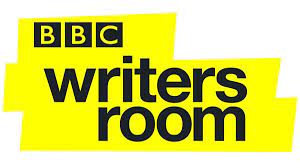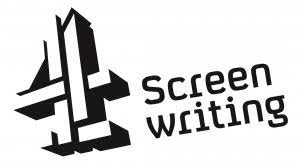Hi There,
This week, further script reader feedback from the 2024 Channel 4 screenwriting course. This fortnight, from the excellent Jon Champion. Jon did a brilliant job as a reader and has impressive previous experience working in development (He was one of the selected trainee script editors on the 2022 Eleven Film Duly Noted scheme, which, incidentally, is currently open for applications, until March 22nd https://www.elevenfilm.com/duly-noted-2024/ ).
But Jon brought another perspective to the reading, having been one of the 12 writers on the 2023 Channel 4 screenwriting course. (And the script he wrote on the course was outstanding).
Over to you Jon –
‘Allow me to introduce you
Of all the commonalities between the script submissions I was entrusted with for 4Screenwriting 2024, there was one that elicited a particular amount of, shall we say, passion.
I really care about the fine details in a script; sure, you have character arcs, plot, and dialogue – but if the opening action line is a massive chunk of text, or a scene starts with “INT. JACKIE’S BASEMENT – DAY” followed by “We’re inside Jackie’s basement,” – I’m already crying inside. However, no detail raised my blood pressure more than the character introductions.
If a story is a skeleton, the characters are the flesh and blood. These people are directly responsible for driving the plot, which is an apt metaphor because how many times have we climbed into an Uber, seen a laminated poster for the driver’s YouTube channel about bigfoot sightings on the passenger seat and thought, “I don’t trust this person to get me where I need to go.”? I think the same goes for screenwriting. How a writer brings a character to the reader’s attention is paramount because not only does it help give us a sense of who we’ll be rooting for, but it also lets the reader know they’re in safe hands if the introduction is competent. With that said, I’d love to run through some of the elements of character introduction that I think are make or break.
During one of the Zoom calls with the other readers, I found myself particularly flustered when describing the use of parentheses in the middle of a character introduction. This is a reliable device and can be very effective if used concisely. For me, the trouble comes when it tries to be pithy but ends up disrupting the rhythm of a sentence. For example:
Suddenly, AGATHA (50s, an elusive flicker of light and wisdom, once ate a Mars bar in Lidl but then choked on it so had to spit it into an OAP’s shopping basket) pulls out a gun and takes aim.
Even though I kind of want to know how Agatha feels about Mars bars now, this is detrimental for a few reasons. You can’t shoot or perform any of the details within the parentheses. They’re essentially taking up unnecessary space, which can be critical if you’re trying to write with a sense of economy. As I mentioned earlier, the rhythm of the sentence feels disrupted. It doesn’t give the reader much confidence in the early stages of a script. You’ve done all the work of creating a character and building up their trajectory in your mind, only to halt your progress with a clunky description. A little bit like releasing a rare bird back into the wild, only to watch it soar head-first into an oncoming Eddie Stobart lorry. We’ve all been there.
Craig Mazin – creator of Chernobyl and The Last of Us, as well as co-host of the Scriptnotes podcast – makes a great point about how good character introductions often rely on hair, wardrobe and makeup to paint an enticing picture. He says that these are three key production departments on any given set, so providing detail on these elements of character can be massively useful not just for the reader, but for the production as a whole. Does the character have a very specific tattoo? Do they have scars? Are they conscious of how their hair is styled or not? What do their clothes tell us about them before a single line of dialogue has been uttered? All of these tiny attributes provide such a rich quality and allow the reader to visualise the character as the writer intends to show them on screen. It can be the difference between a character we want to spend time with or a nobody we can’t wait to see the back of.
I always enjoy it when a character is introduced in the same tone as the script itself. This achieves a few things at the same time because it can be about letting the reader know what kind of journey they’re embarking upon, as well as getting them acquainted with a character. The Devil Wears Prada employs this technique with great effect:
STEAM ON A MIRROR
…wiped off by ANDY SACHS, 20’s, pretty but not glamorous, smart but green, hair up in a towel, brushing her teeth.
This paints a picture and services the visual elements of the script but it also lets us know what currency the film is dealing in. This story is about appearances, fashion and esteem. Now, the reader can proceed with a strong sense of what they’re likely to encounter. There is suddenly less anxiety about whether or not the experience of reading the script will be an enjoyable one, all because of a character’s introduction.
When all is said and done, audiences want something juicy to cling on to when it comes to the characters in a script. Grounding their descriptions in visual cues or sound – the two halves of a visual story – can go such a long way. Although, as much as it hurts to come across a disappointing presentation of character, it often enriches the ones that have stayed with me long after a story has CUT TO BLACK.
I really fancy a Mars bar now…’
Thank you Jon!
SCRIPT READING & DEVELOPMENT Q&A
The April 10th session is now sold out but I am running this again on Thursday May 2nd (on zoom, 6-8.30pm) and there are still places available
https://script-consultant.co.uk/script-reading-development-qa/
The next newsletter will enter the world on Friday March 22nd
Happy writing,
Phil
PHILIP SHELLEY
www.script-consultant.co.uk
Twitter: @PhilipShelley1
Friday March 8th 2024






















